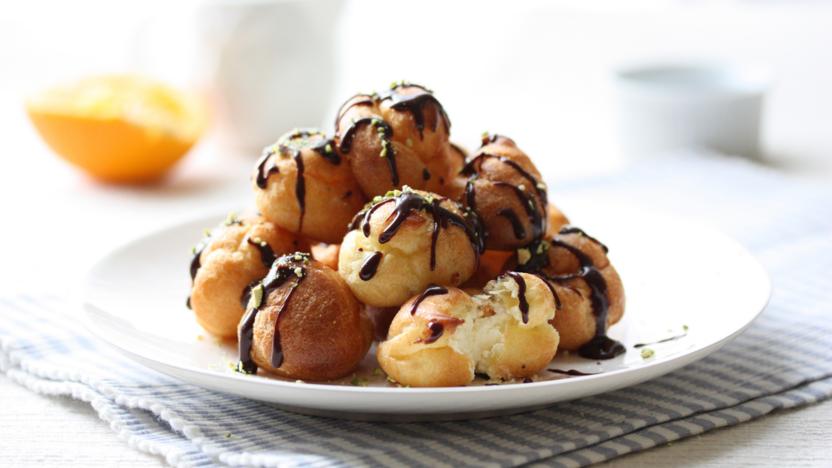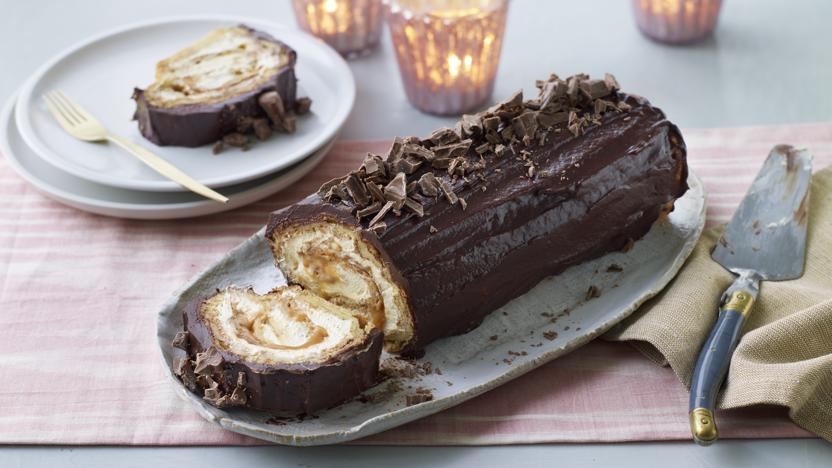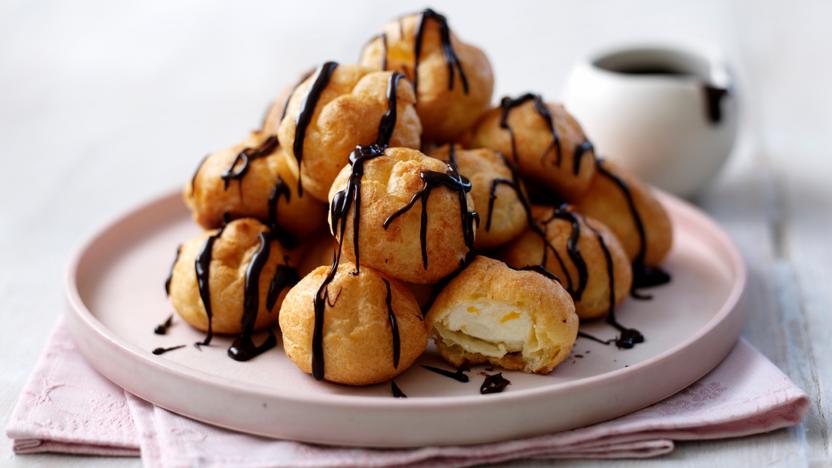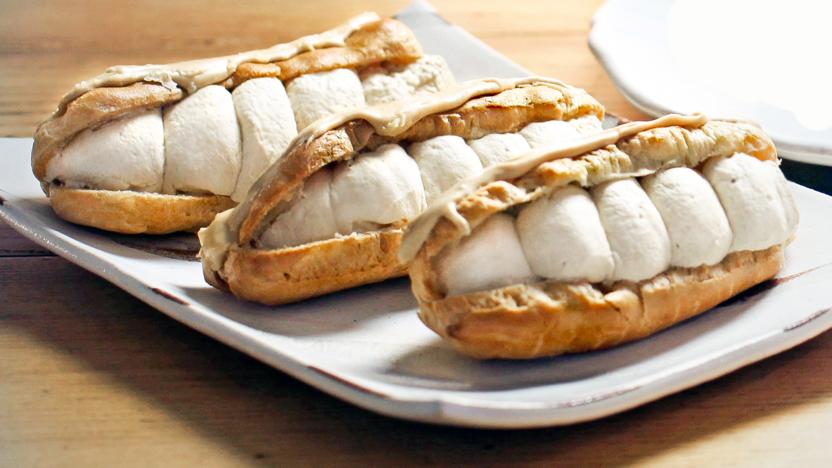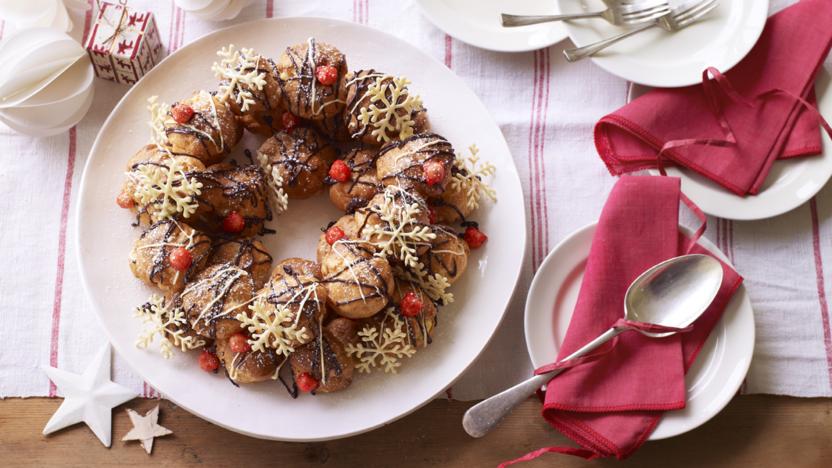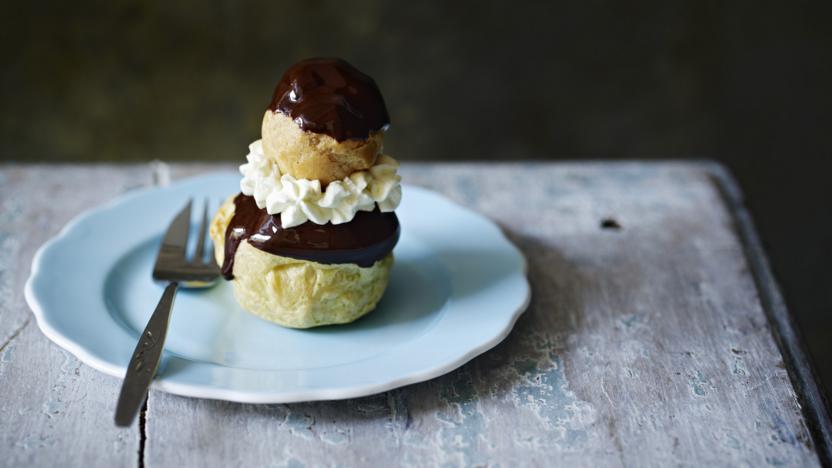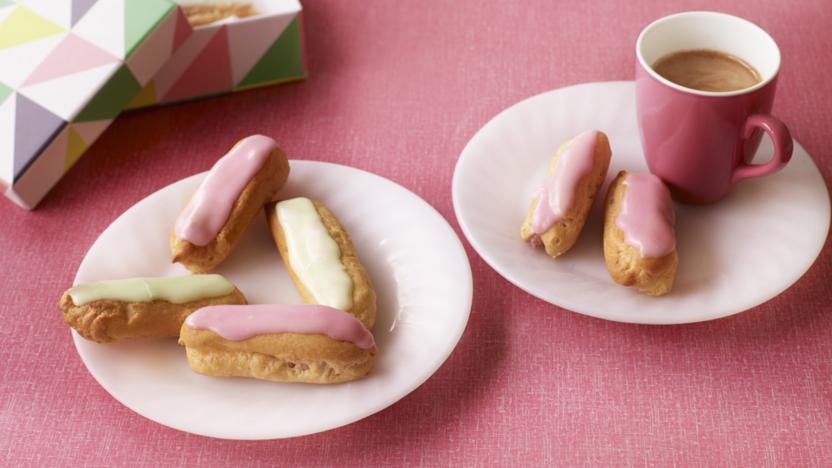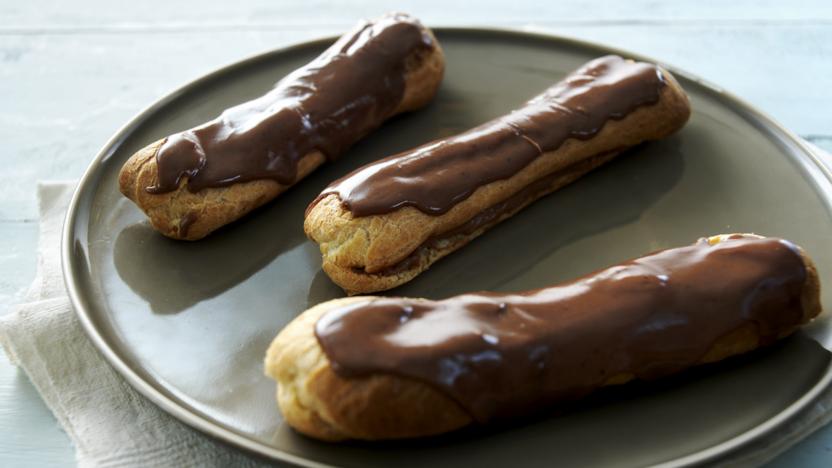How to make choux pastry

Skill level
Intermediate
Equipment you will need for this technique
Saucepan
Wooden spoon
Choux pastry has a high water content. The water in the mixture creates steam during cooking which forces the pastry to expand in volume, leaving it with a hollow centre and a light texture.
-Heat the water in a saucepan. Add the softened butter in small pieces. Bring the mixture to a rolling boil.
-When the butter has melted, add the flour to the mixture all at once and beat continuously until the mixture has thickened and is smooth. Continue to beat until the dough comes away cleanly from the sides of the pan.
-Add the egg a little at a time. Getting the consistency right at this stage is the trickiest thing about choux pastry. Stop adding the eggs when the batter drops off the spoon in a v-shaped ribbon. It should still be stiff enough to hold up when piped. If you have leftover egg, this can be brushed on the top of the profiteroles before baking for extra shine.
-Spoon the mixture into a piping bag with the tip cut off or fitted with a 2cm/Âľin plain round nozzle. Pipe the pastry onto a baking tray lined with baking paper. You can use it in rounds, for profiteroles, in long strips for Ă©clairs, or in a doughnut-shape to make Paris-Brest. Pull the piping bag away quickly when you want to move onto the next one, whipping the end of the pastry back on itself.
-Choux pastry will puff up in the oven as the steam pushes up and out, so ensure there's enough space between the pastries for them to expand. Allow the pastries to cool down in the oven, so that the steam can escape and the pastry can dry a little to a crisp finish.
-Fill the cooled pastries with cream, crème pâtissière or ice cream and top a the sauce of your choosing.
